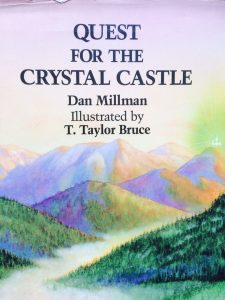Preventing Mental Health Issues in Teens
Everyone loves a story and from the minute we get up in the morning we all tell ourselves stories – many stories. Most of them are very short and we may not even be aware we are telling ourselves them. Some are positive – ‘I’m looking forward to the party tonight’. Some are neutral and some are negative – ‘I’m not looking forward to school because I’ve got no friends’. Some are sometimes repeated and stick a bit. Others are repeated on a daily basis and become the landscape we live in and we come to believe as the truth about ourselves or our situation. Listening with care to the stories our children are telling themselves and turning the negative landscapes into positive ones turns lives around.
Now I’m going to let you into a secret that not many people realise.
We all have mental health, each and every one of us.
We all have PMA – Positive Mental Attitude for those who tell themselves positive stories and Poorly Mental Attitude for those who tell themselves negative stories about themselves or their situations.
We can all control our mental health with the stories we tell ourselves – some of us just need more help than others. By helping young people develop some simple skills and strategies they can make the shift to a positive mental attitude.
Using metaphor stories we can help children to see things in a different way. We can embed messages into the stories that will work long after the surface of the story has been heard.
I’ve got a friend who doesn’t have much faith in the weathermen and was fed up always getting wet so now he always carries an umbrella to protect him from the rain. To begin with it was one of those walking stick ones that was awkward to carry, good to lean on but he kept hanging it up, forgetting about it and leaving it behind. Now he carries one of those tiny ones that hardly weighs anything and fits in a pocket so he never leaves it behind anymore.
The story above talks about being prepared for bad weather and changes the size of the umbrella to something more manageable. The rain is the negative behaviour we want to change. The umbrella is the new skill for helping protect against the unhelpful behaviour with the big umbrella showing it can be tricky to get used to the new behaviour and forget about it but over time and changing it to a smaller one it becomes easier to remember and always have it with you.
Did you ever suck your thumb as a child? Or maybe you had a bit of silky ribbon you liked to stroke? Or a cuddly toy you hugged? Maybe you still do! These comforters acted as physical anchors (or stimuli) to help you feel more comfortable or safer or soothed you. To help children overcome their negative thoughts or behaviours we can create anchors for them that they will always have with them to be able to use when they need it. Get the child to think about a time when they were feeling very confident, happy or positive. Talk about the thoughts, emotions and the environment when they felt those positive emotions. Whilst they are thinking about these feelings we need to activate the anchor when they are experiencing the desired emotions.
For children who are auditory it could be a song. The song lyrics are often great metaphors and the tune easily hummed. Dappy’s recent hit single ‘Happy’ is a great one to sing to yourself as the words and melody hit all the right spots to help you reach that happy feeling!
For children who are visual imagining themselves in a place where they feel safe or happy or confident or relaxed with as much detail as possible will give them a place to escape to in their minds when they need to experience positive feelings.
For children who are kinaesthetic a good anchor will be reinforcing a touch on the body somewhere eg putting their thumb and middle finger together or pinching their earlobe whilst thinking about their good feelings.
Put all three of these together and you have a linked anchor.
The process is very simple – think about the state you want, ‘fire the anchor’, when the feeling starts to fade release the anchor, open your eyes, look away, count to 10 and repeat the process to embed the anchor. By firing the anchor we will activate the positive state of emotions that we want to have anytime we want to have them. By skilfully teaching a child how to do this they can then have the resources to build their own anchors when they need some help getting back to a positive mental attitude.
It might seem crazy what I’m about to say
Sunshine she’s here, you can take a break
I’m a hot air balloon that could go to space
With the air, like I don’t care by the way
Because I’m happy
(Lyrics Pharrell Williams)
We all get fed-up from time to time and helping your child manage their emotions in different situations will help them in their adult life. If you have concerns about the reasons for their sadness, the frequency or the depth of their sadness and would like additional advice and support contact me at soo@nlp4kids.org or on 07851447612.



